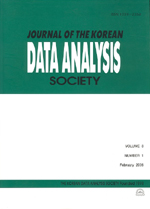기업의 주식 소유구조가 주식 유동성에 미치는 영향
The Effects of Ownership Structure on Stock Liquidity
- 한국자료분석학회
- Journal of The Korean Data Analysis Society (JKDAS)
- Vol.18 No.2
-
2016.04799 - 811 (13 pages)
- 32

선행연구에 따르면 지배주주의 주식 소유 집중도가 커질수록 지배주주가 사적 이익을 취할 가능성이 커지고, 더 나아가 지배주주가 정보공개를 충실히 하지 않음으로 인하여 주식 시장 정보환경을 악화시킨다고 한다. 또한 최대주주 지분율이 큰 경우 유통 주식 수 감소로 유동성이 감소할 수 있다. 이에 본 연구에서는 최대주주 지분율이 높은 기업의 경우 주식 시장 정보환경이 악화되어 주식 유동성이 낮을 것으로 예상하는 가설을 실증 분석한다. 또한, 소액주주는 기업의 정보에 접근하기 어려워 무정보 거래자일 가능성이 많고 그러하다면 소액주주 지분율이 높은 기업은 정보 없는 거래자 증가로 주식 유동성이 증가할 것으로 예상하는 가설을 설정하고 실증 분석한다. 2002년부터 2013년까지 12년 기간 동안 한국거래소에 상장된 주식을 대상표본으로 기업의 최대주주 지분율, 소액주주 지분율과 Amihud, Roll impact, Amivest, 주식 거래량 회전율 등의 주식 비유동성, 유동성 대용치로 측정된 주식 유동성과의 관계를 분석한 결과, 최대주주 지분율이 커짐에 따라 주식 유동성이 악화되고, 소액주주 지분율이 큰 기업일수록 주식 유동성이 커지는 관계를 발견하였다.
Prior research shows the positive relation between ownership concentration and agency costs. Further, it is reported that ownership concentration and the agency problem worsen information environment in the stock market. Based on these findings, it is hypothesized that ownership concentration of a firm will increase stock illiquidity because controlling shareholders may seek their private benefits and it is possible that they may not provide timely information in the stock market. In addition, dispersed ownership can increase stock liquidity because investors holding small portion of share may be uninformed traders and then information asymmetry in the stock market may be reduced. Using the stock market data for firms listed on the Korea Exchange from 2002 to 2013, this study examines the empirical predictions regarding the effects of ownership structure on stock markets: (1) whether controling ownership decreases stock liquidity; (2) whether dispersed ownership improves stock liquidity. We find empirical results that support all the predictions. The results show that ownership concentrations are negatively related to stock liquidity measured by the Amihud measure, Roll impact, Amivest, and share turnover. Further, this research finds that there exists the positive effects of dispersed ownership on stock liquidity.
1. 서론
2. 연구 가설
3. 연구방법과 표본
4. 실증분석 결과
5. 결론
References
(0)
(0)